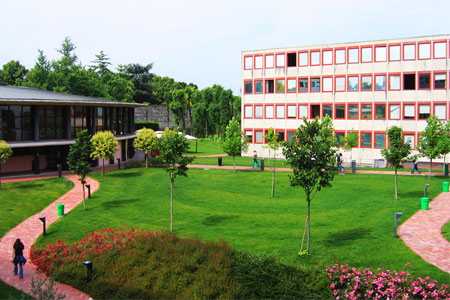Course not running

Lesson timetable
Go to lesson schedule
Learning outcomes
At the end of the course the students: - will have become familiar with the basic concepts of lexicology and morphology; - will have understood the basic mechanisms of word formation in Spanish and will be able to recognize and apply them in the analysis of texts; - will have approached some examples of lexical creativity, coining and semantic evolution in different areas. Furthermore, C1 language level of competence in Spanish (according to the Common European Framework of Reference for Languages) is also required.
Syllabus
The course will offer an introduction to the fundamental concepts of morphology (the concept of word, lexeme/morpheme, inflectional morpheme/derivational morpheme etc.) and of lexicology, with special attention to the mechanisms of word formation (composition, derivation etc.).
Specifically, the course will analyse current neological trends in Spanish language through examples of innovation and lexical creativity from the following areas: colloquial language, phraseology, literary discourse and the (digital) media.
Lectures will be supported by Powerpoint presentations and by multimedia material; there will also be workshop-style classes with practical activities focusing on the analysis of selected texts relating to the categories presented.
Students from both curricula are expected to study Casado Velarde’s monograph (2017); furthermore, LLS and ED students will have to study the following bibliography:
Montoro del Arco, Esteban (2008): “Relaciones entre Morfología y Fraseología: las formaciones nominales pluriverbales”, en Ramón Almela Pérez & Esteban T. Montoro del Arco (eds.), Neologismo y morfología, Murcia: Universidad de Murcia, pp. pp. 121-146.
Please note: All the articles, short essays and PDF extracts loaded onto the Moodle platform during the course are part of the bibliography.
Reference books
| Author |
Title |
Publisher |
Year |
ISBN |
Note |
| Casado Velarde, Manuel |
La innovación léxica en el español actual
(Edizione 2)
|
Síntesis |
2017
|
978-84-9077-151-8 |
Il libro (2a edizione) si può acquistare in formato e-book direttamente dalla pagina web della casa editrice. |
Assessment methods and criteria
The exam will be a written test that will ascertain the depth of knowledge acquired on the topics on the syllabus, as well as the correct use of language, the terminological precision, and the ability to connect the information as a network of knowledge.
The exams questions will focus on the syllabus topics covered during the lessons, on the teaching material provided and on the course bibliography; students may sit the exam only after they have obtained a C1 certificate in Spanish language (or higher level).
The test will have a duration of 75 minutes and will be entirely in Spanish. It will include multiple choice questions, short answer questions, and open questions. Some questions will require metalinguistic competence and the ability to identify phenomena covered during the course and to provide clear examples.
The final mark will be expressed in a scale of 30 and will be the average between the grade obtained in the written test and the grade from the Spanish proficiency exam (converted in a scale of 30 in accordance with the indications detailed in “Vademecum normativo per gli studenti dell'Area di Lingue e Letterature Straniere"). Exam results will be communicated as a notice in the dedicated section of the web page (“Avvisi”).
Please take note:
- In order to pass the exam it is necessary to study both the compulsory bibliography and the learning materials available on Moodle.
- Syllabus, bibliography, and assessment methods and criteria are the same for all students, including students who do not attend classes. The latter are advised to consult the reference bibliography listed in Moodle to solve potential doubts.
- Erasmus students are invited to get in touch with the lecturer at the beginning of the course for further information.
- The exam will take place in the classroom. However, due to the current covid situation, students may require to sit the written exam online during the academic year 2020/21.
PREREQUISITES – SPANISH PROFICENCY LEVEL
Spanish proficiency level C1 (or higher) is a prerequisite for the course and it corresponds to 3 out of 9 CFU awarded by this course.
Proficiency level validation is based on certificates issued by CLA (Centro Linguistico di Ateneo) or by Instituto Cervantes and it is a requirement for the exam with the lecturer for Lengua española 3.
As detailed in "Vademecum normativo per gli studenti dell'Area di Lingue e Letterature Straniere", C1 certificate is valid for five years.
Before sitting the final exam students must have passed and registered the following exams (as stated in "Vademecum normativo per gli studenti dell'Area di Lingue e Letterature Straniere"): Lengua española 2 and Literatura española 2/Lengua, literaturas y culturas hispanoamericanas.







